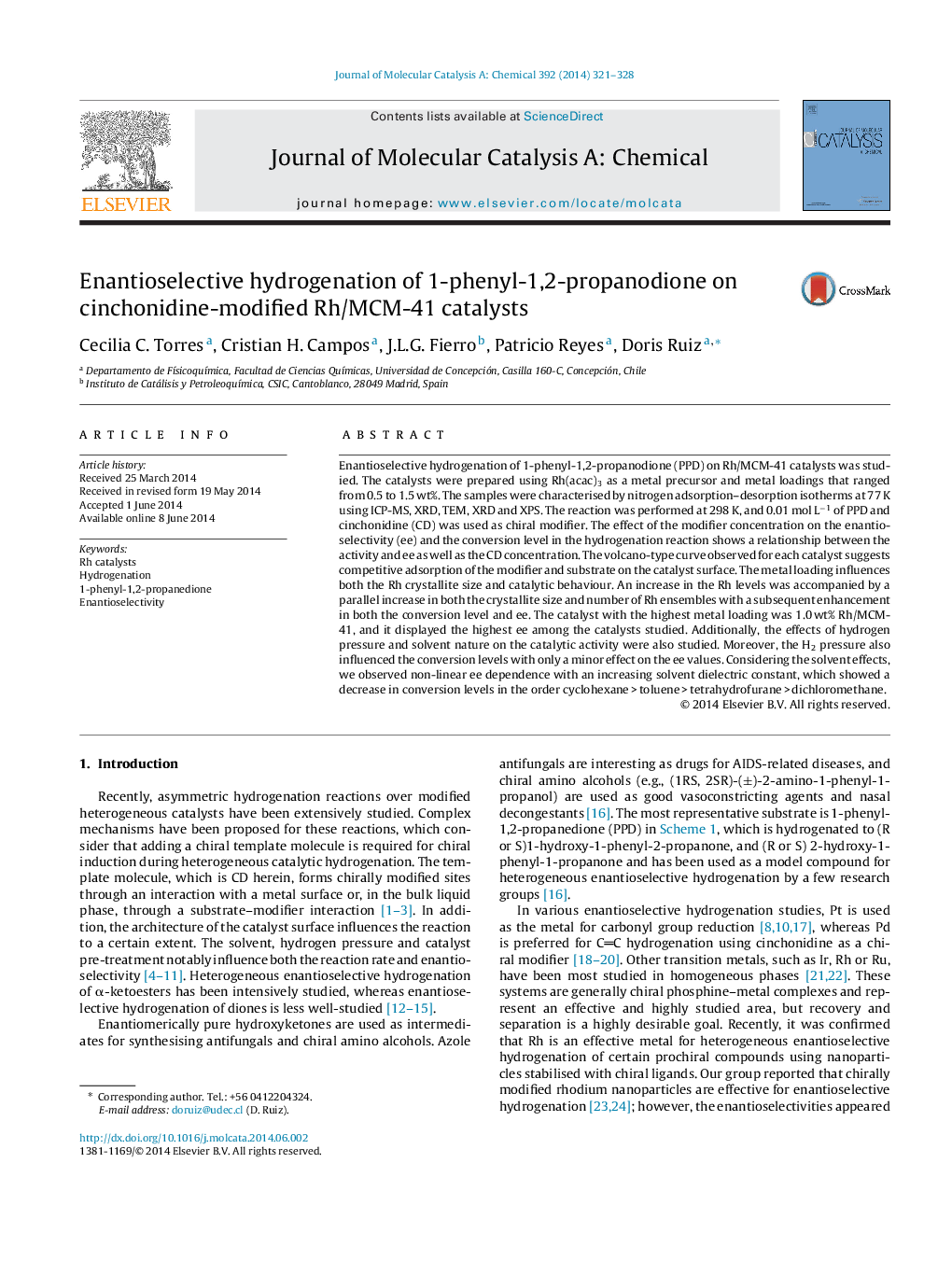| کد مقاله | کد نشریه | سال انتشار | مقاله انگلیسی | نسخه تمام متن |
|---|---|---|---|---|
| 65172 | 48384 | 2014 | 8 صفحه PDF | دانلود رایگان |

• Heterogeneous enantioselective hydrogenation of 1-phenyl-1,2-propanodione over Rh/MCM-41 catalysts was generated.
• The enantioselectivity for R-1-hydroxy-1-phenyl-2-propanone was approximately 70%.
• The confinement effect of the MCM-41 substrate enhances both activity and selectivity.
• Catalytic performance is significantly affected by the H2 pressure and solvent type.
Enantioselective hydrogenation of 1-phenyl-1,2-propanodione (PPD) on Rh/MCM-41 catalysts was studied. The catalysts were prepared using Rh(acac)3 as a metal precursor and metal loadings that ranged from 0.5 to 1.5 wt%. The samples were characterised by nitrogen adsorption–desorption isotherms at 77 K using ICP-MS, XRD, TEM, XRD and XPS. The reaction was performed at 298 K, and 0.01 mol L−1 of PPD and cinchonidine (CD) was used as chiral modifier. The effect of the modifier concentration on the enantioselectivity (ee) and the conversion level in the hydrogenation reaction shows a relationship between the activity and ee as well as the CD concentration. The volcano-type curve observed for each catalyst suggests competitive adsorption of the modifier and substrate on the catalyst surface. The metal loading influences both the Rh crystallite size and catalytic behaviour. An increase in the Rh levels was accompanied by a parallel increase in both the crystallite size and number of Rh ensembles with a subsequent enhancement in both the conversion level and ee. The catalyst with the highest metal loading was 1.0 wt% Rh/MCM-41, and it displayed the highest ee among the catalysts studied. Additionally, the effects of hydrogen pressure and solvent nature on the catalytic activity were also studied. Moreover, the H2 pressure also influenced the conversion levels with only a minor effect on the ee values. Considering the solvent effects, we observed non-linear ee dependence with an increasing solvent dielectric constant, which showed a decrease in conversion levels in the order cyclohexane > toluene > tetrahydrofurane > dichloromethane.
Figure optionsDownload high-quality image (143 K)Download as PowerPoint slide
Journal: Journal of Molecular Catalysis A: Chemical - Volume 392, October 2014, Pages 321–328